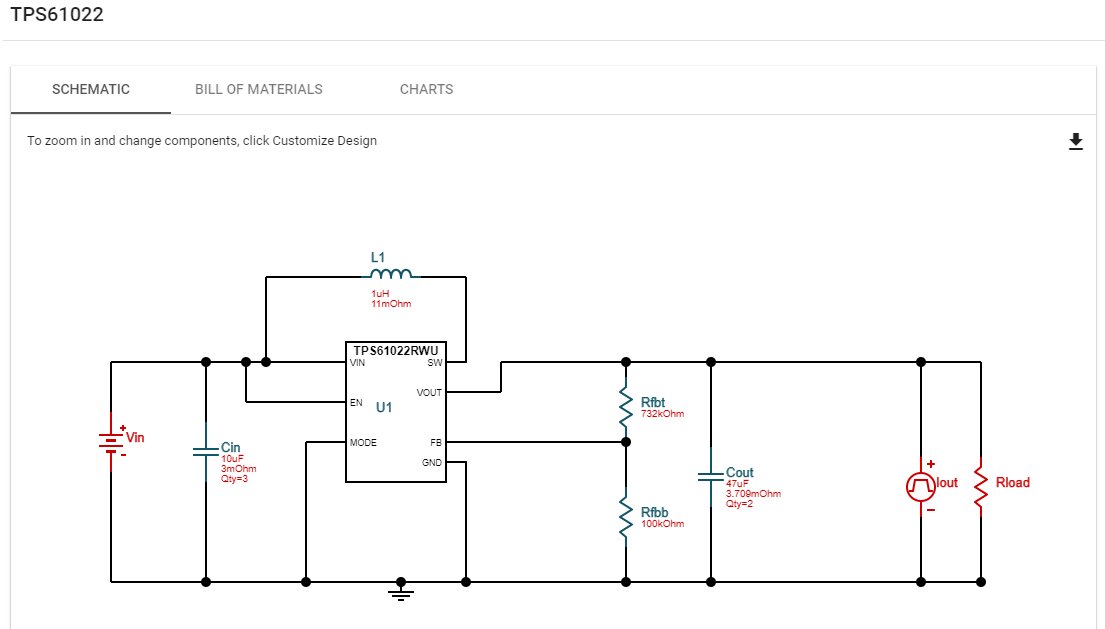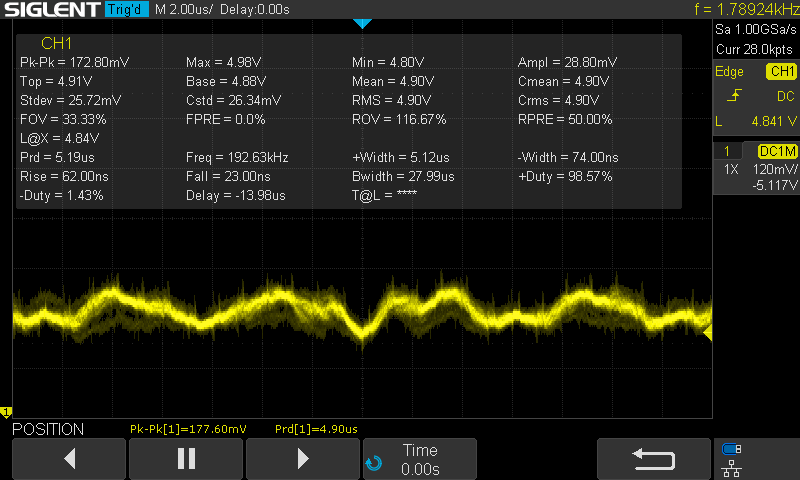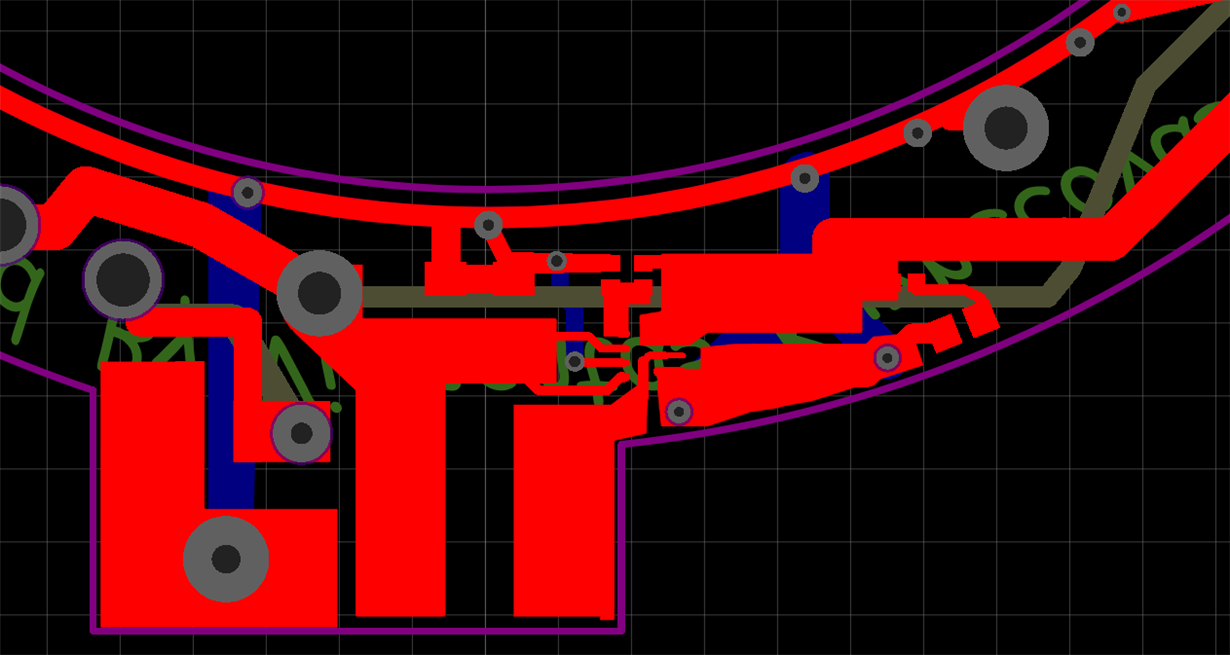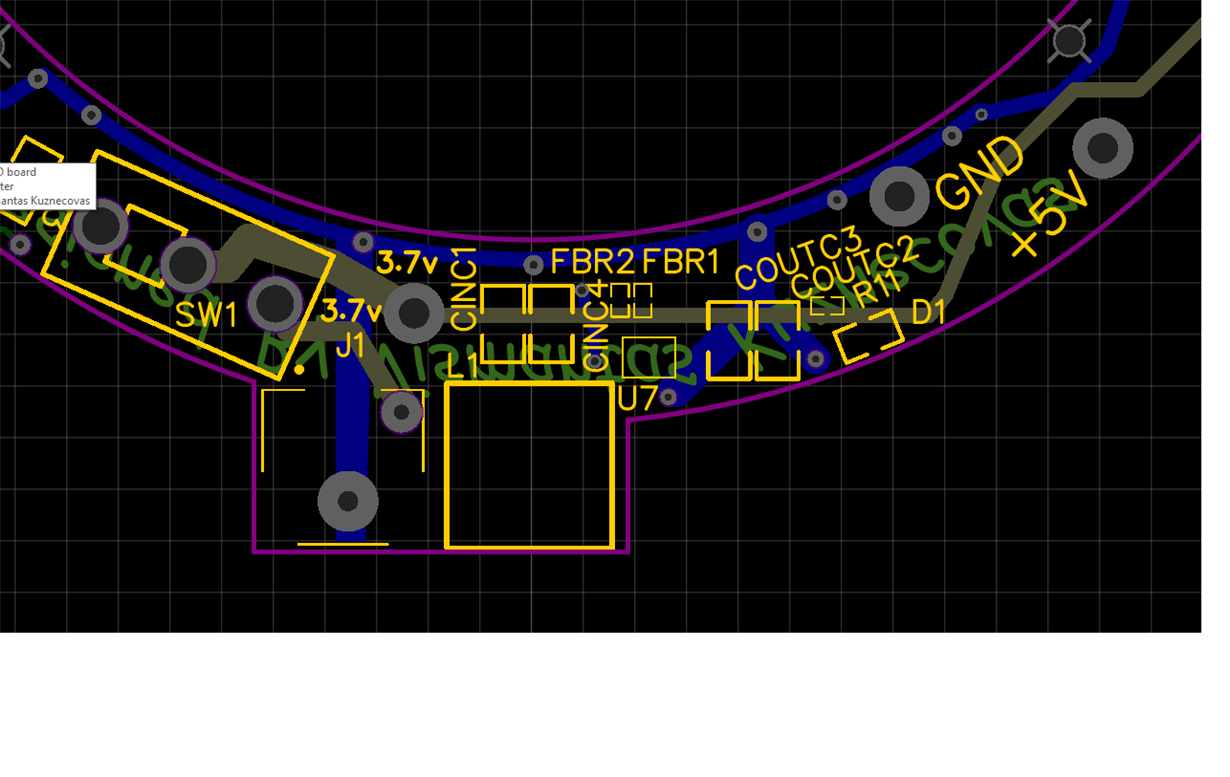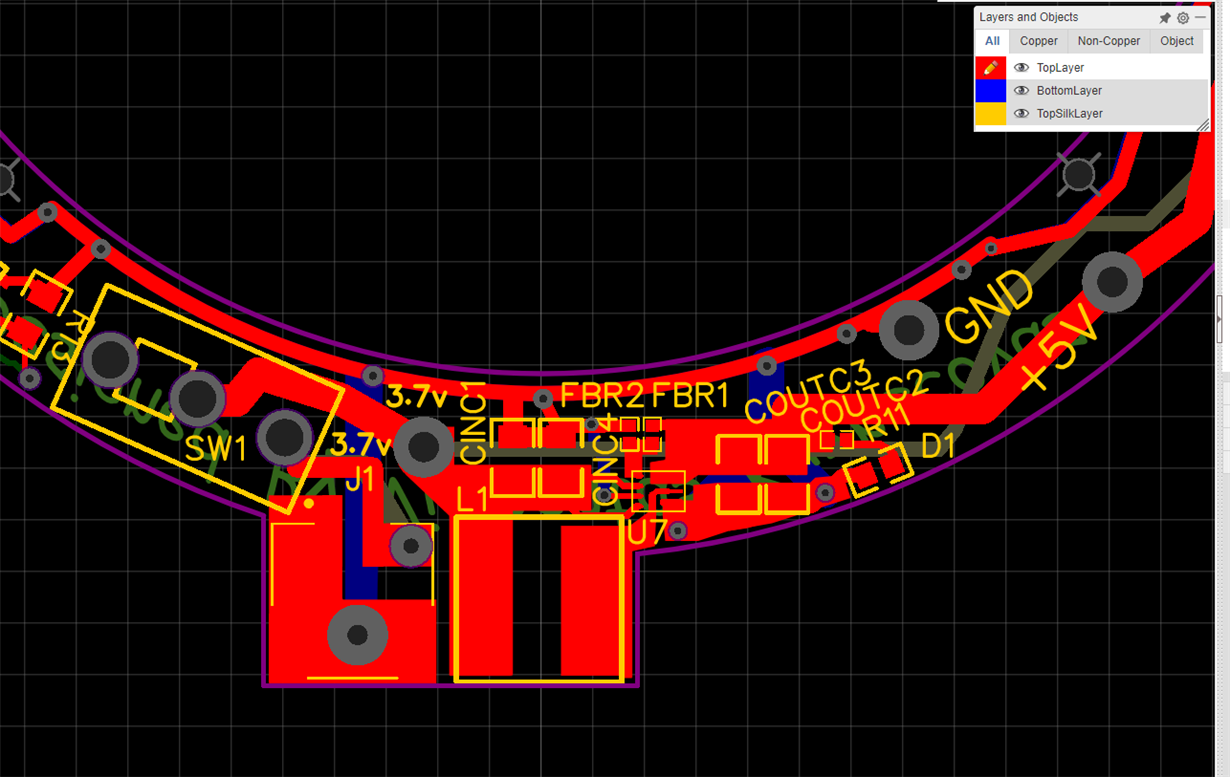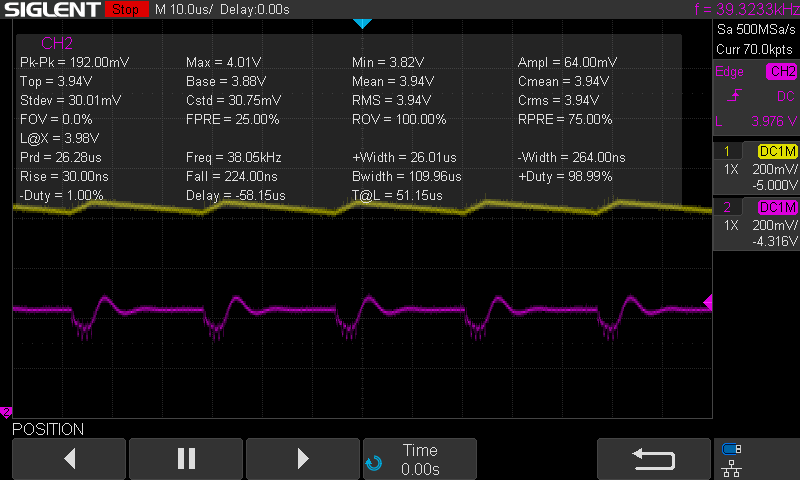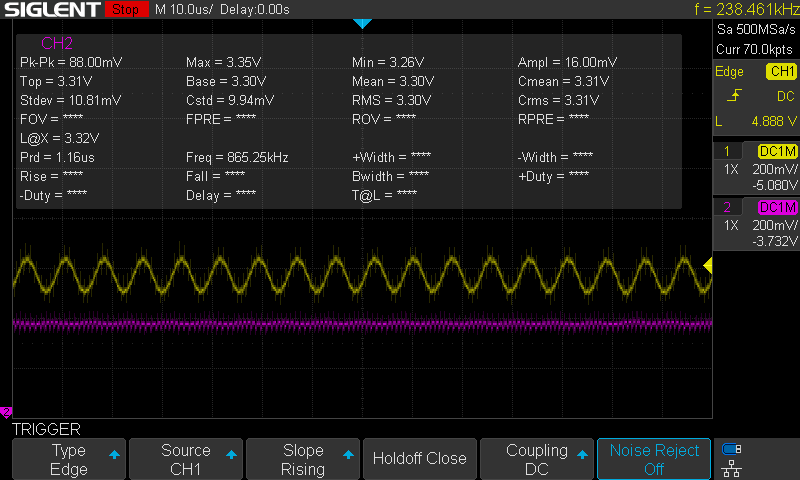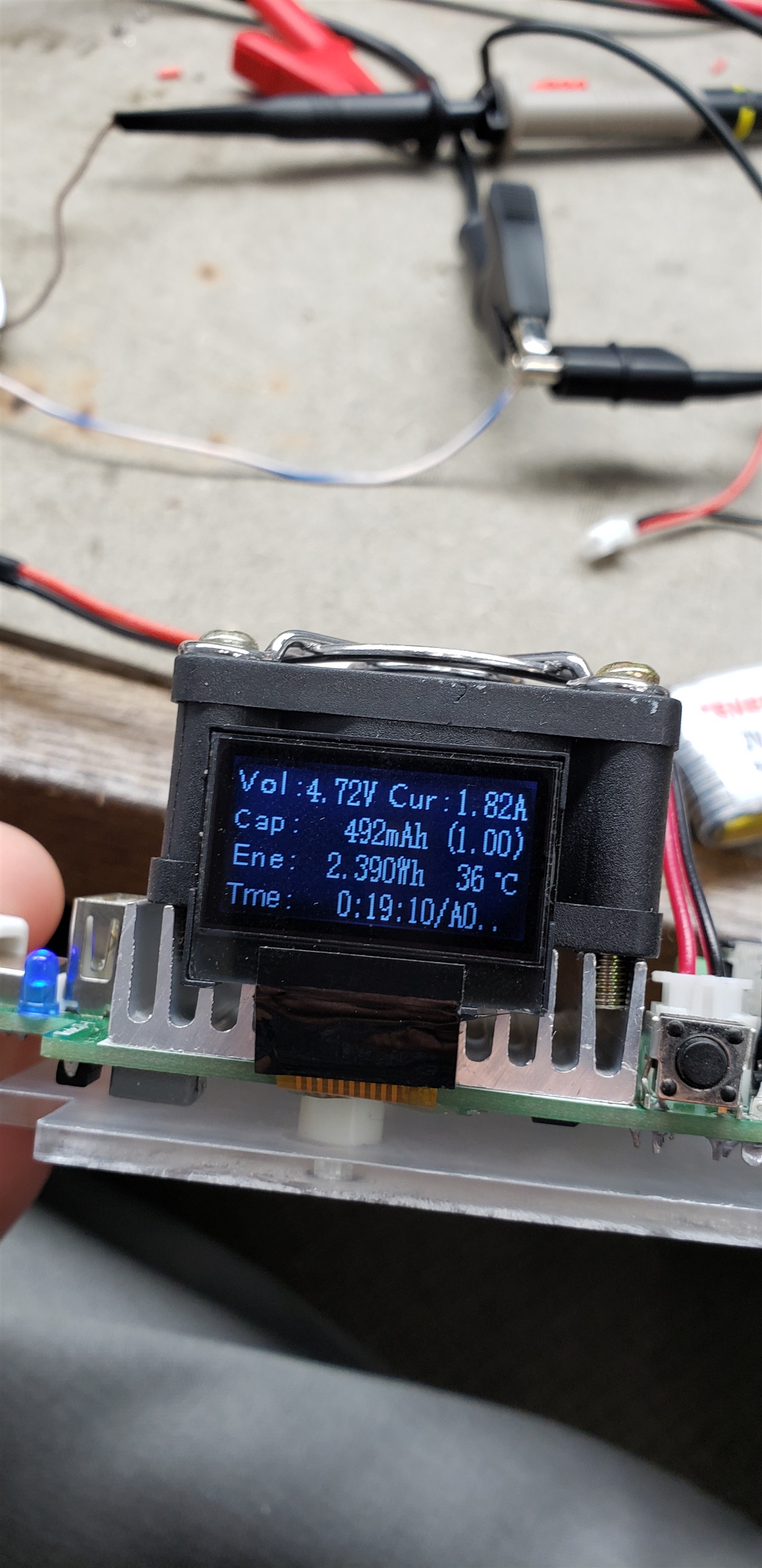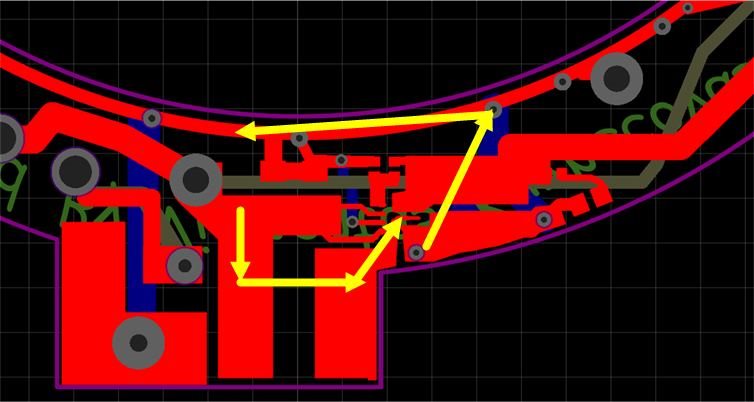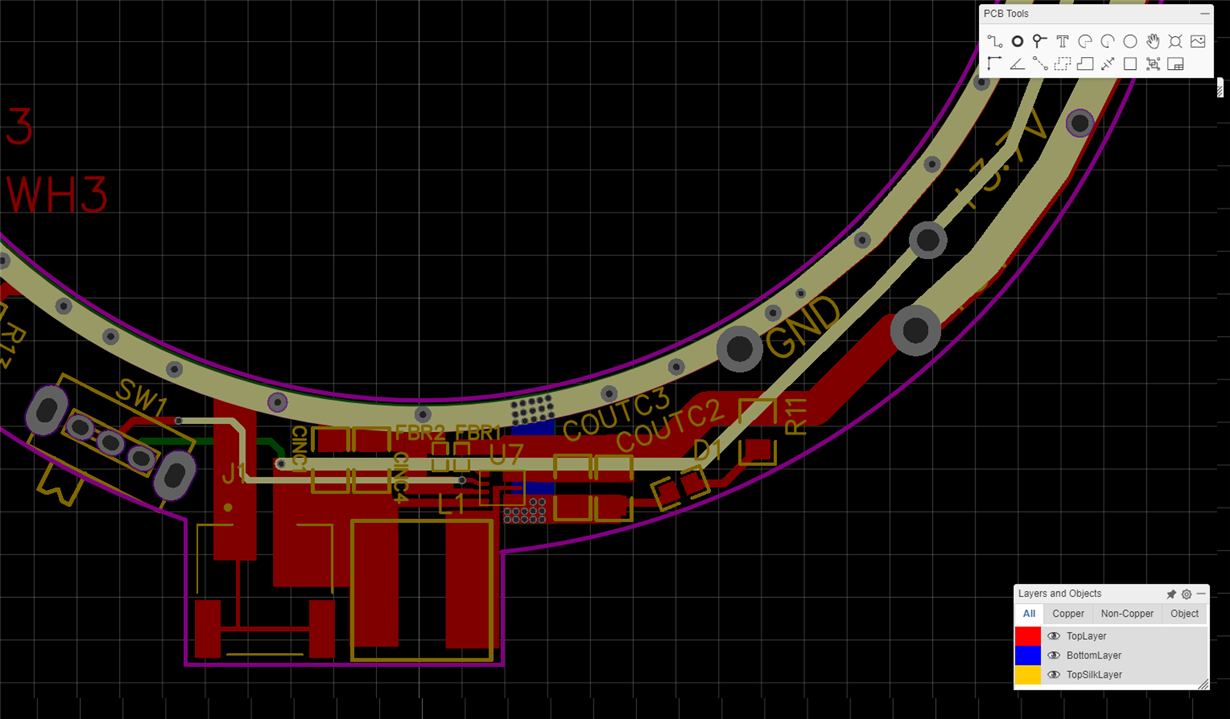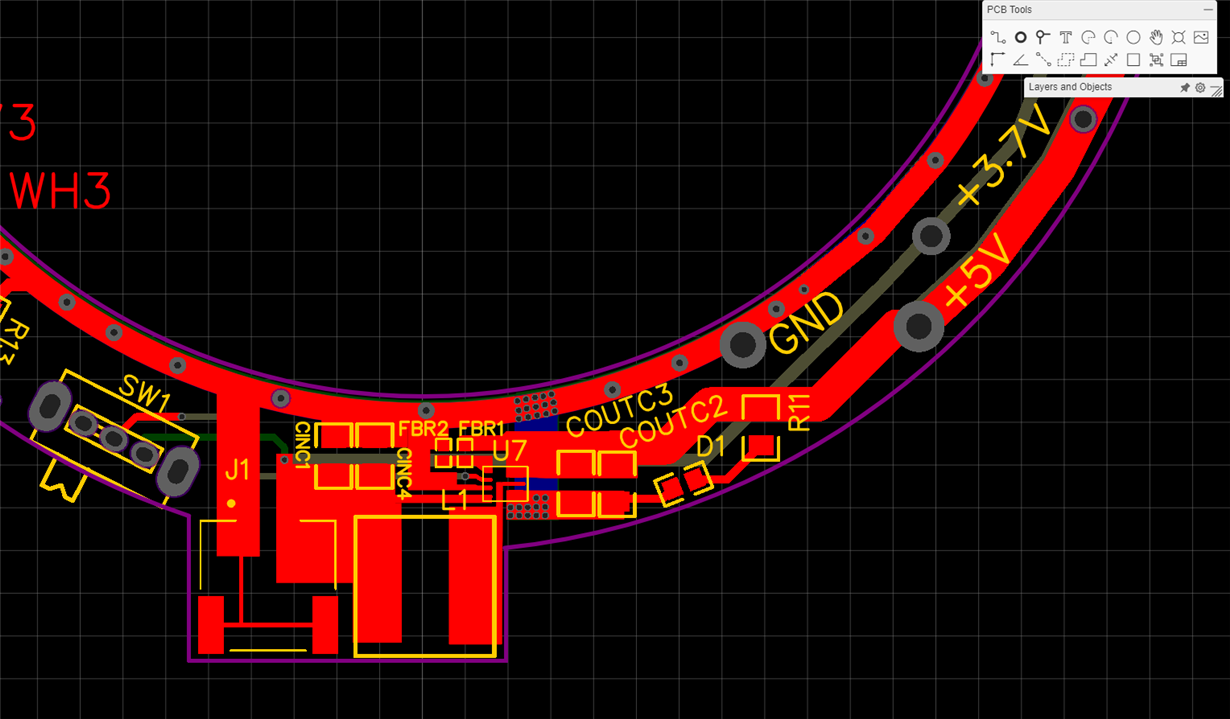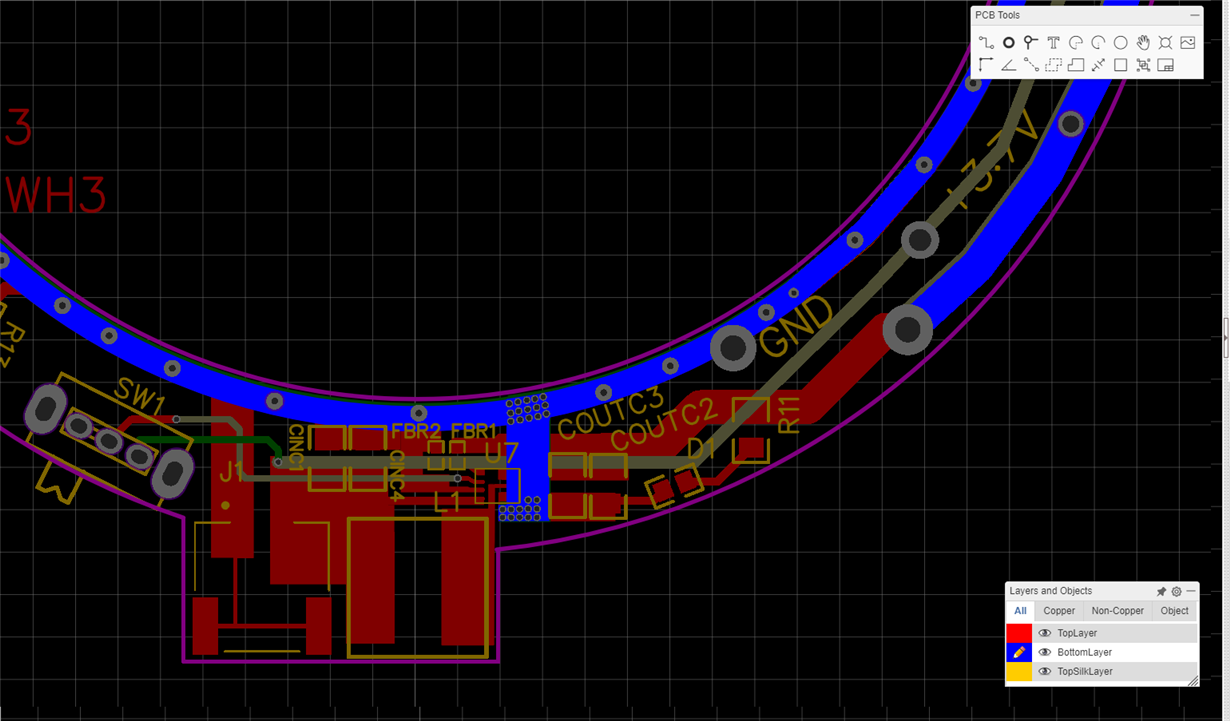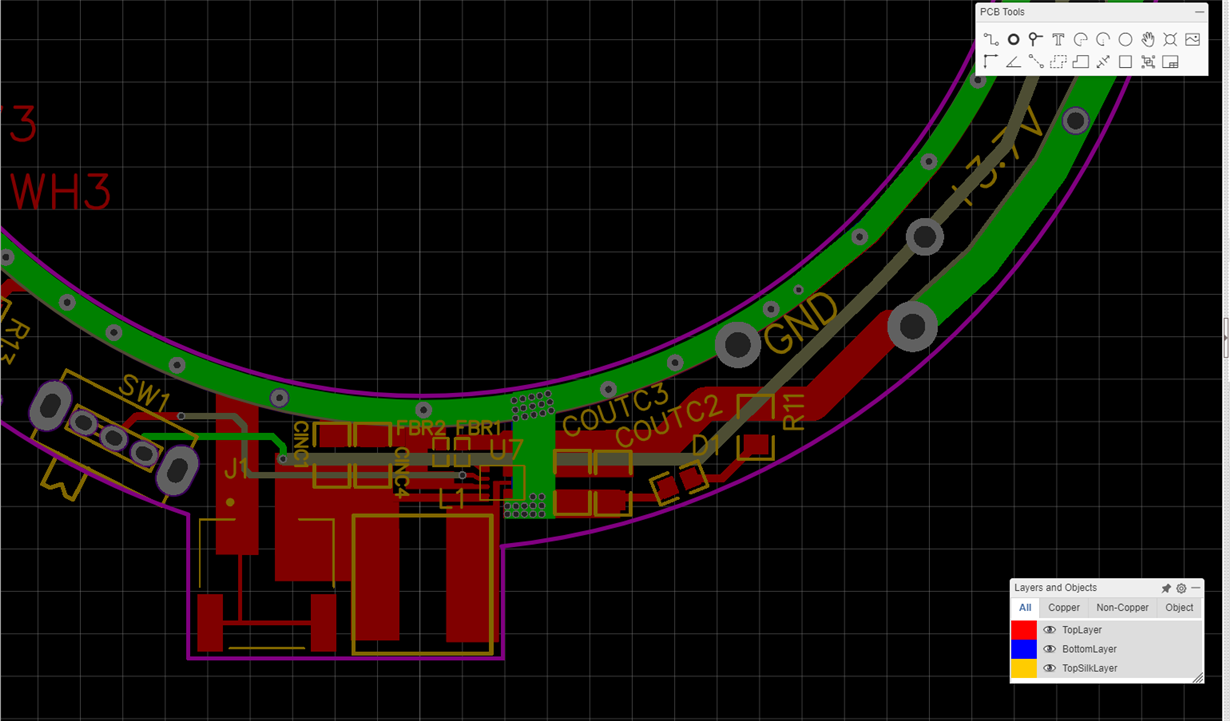Hello,
I am designing a boost circuit based around the tps61022 chip.
My requirements:
Single cell lipo (3.7v) to boost to 5V 3A (aprox 2.4 amps or so, burst for aprox 2 or less seconds when used with LED)
It is used for a high power LED light with a micro controller .
I used the workbench design tool.
During my testing bench supply as a input at 3.7v. I was able to only get about maybe 1 amp output with the output dropping down to 4.8v (drawing more current would result in the boost chip dying).
I was directed to this help page from the support page.
The components used:
TPS61022
Inductor: SRN8040-1R0Y (digikey part: SRN8040-1R0YCT-ND)
732K resistor: ERJ-2RKF7323X (digi part: P732KLCT-ND)
100K resistor: ERJ-2RKF1003X (digi part: P100KLCT-ND)
Input cap QTY 2: 10uf (CL21A226MOCLRNC, digi part: 1276-6780-1-ND)
Output cap QTY 2: 22uf CL21A226MOCLRNCm digi part: 1276-6780-1-ND
I did try adding a 470uf electrolytic cap, that did not solve my issue.
Speaking to the help person in the original ticket, he suggest to use the parts mention in the datasheet (mainly the inductor).
I have ordered some parts to try and solve the issue:
Inductor as per datasheet: XAL7030-102MEC
10uf ceramic cap, C0805C106K8PACTU
22uf ceramic cap, GRM188R61A226ME15D
47uf ceramic cap, GRM31CR61A476KE15L
As well these are some of my calculation from the datasheet:
| Iout(CL) | Vin | 3.7 | V | |||||
| Equation 5 | IL (DC) | 3.649 | A | Vout | 5 | V | ||
| Equation 2 | Duty cycle (D) | 0.334 | % | Iout | 3 | A | ||
| Equation 6 | IL (P-P) | 1.236 | A | fsw | 1 | MHz | ||
| Equation 7 | IL(P) | 4.267 | n(power conversion efficiency) | 90% | ||||
| Equation 9 | Vripple(ESR) | Inductor inductance | 1 | uH | ||||
Also some scope references:
Measuring inductor at 600 mah load: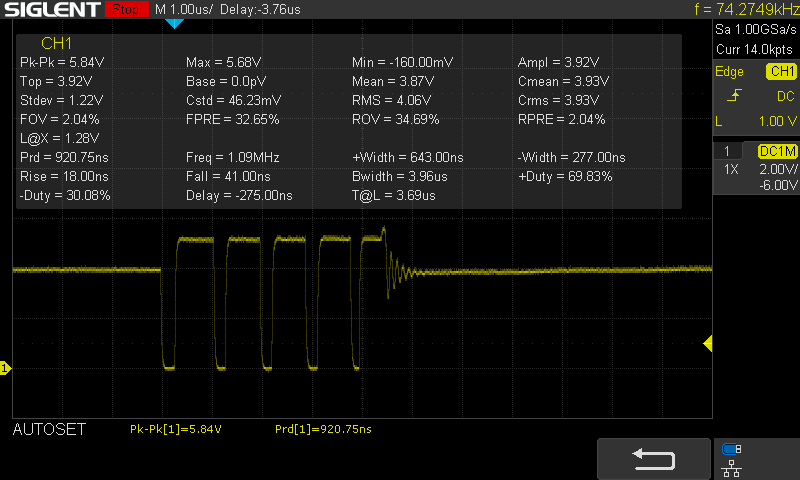

Inductor at no load: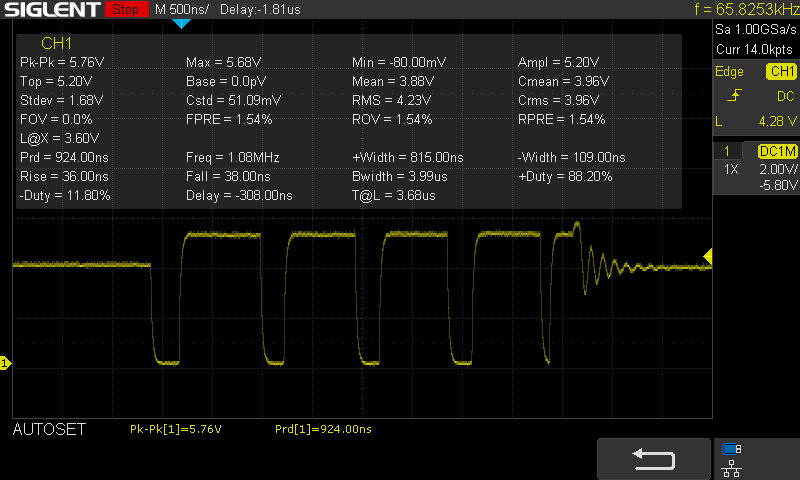
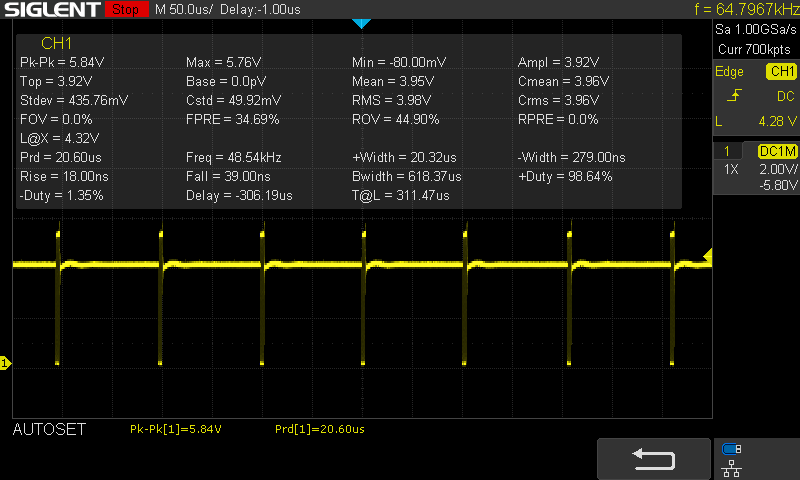
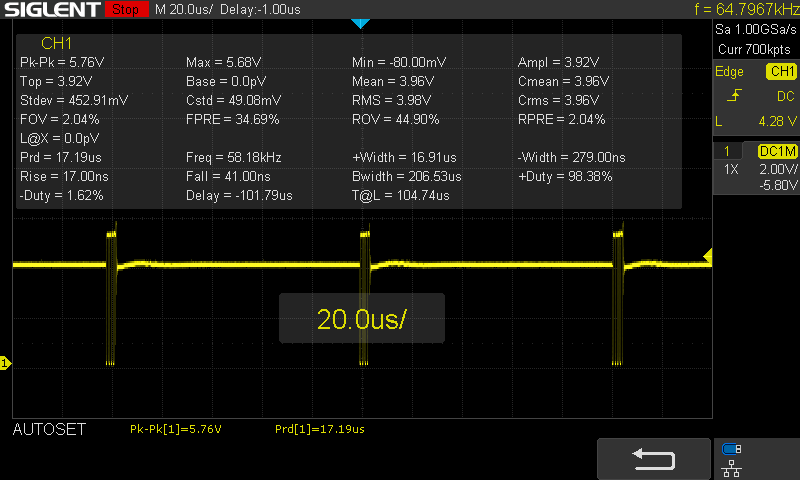
Output no load: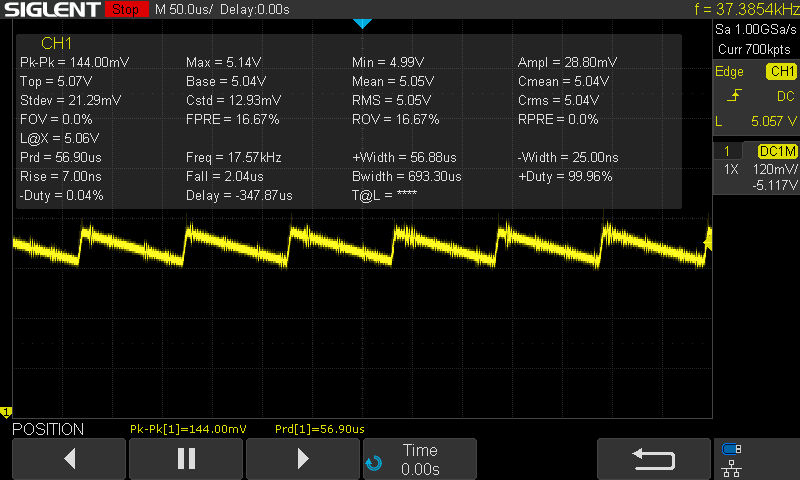
Output at 1 amp load
This last screen cap is not great (was from last week not sure if it was accurate/labeled correctly), I can redo it tomorrow when I get the new parts in.
In the mean time:
Did I miss something or miscalculate something?
Any possible idea on why the low output?


